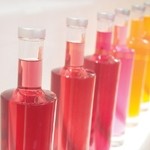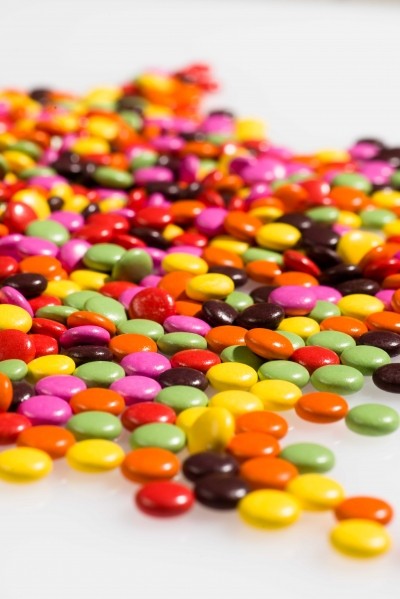Natural colours trend sparks research

- Results opened doors
- Prioritising parameters
- Robust products
- It’s official - smoke flavourings are authorised
If your bright green fruit drink begins to look a bit dull, how can you tell if it’s the green compound disappearing or a brown one appearing? That’s just one of the puzzles investigators at Leatherhead Food Research (LFR) hope to solve in their work on natural colour stability.
LFR first reported in 2010 that it had been quantifying the stability of various natural colours to enable the rapid assessment of shelf-life. The work focused mainly on confectionery and beverages, which were found to be the product areas of most interest to manufacturers, according to head of food innovation, Wayne Morley: “They’re sectors where there seems to be a particular need for colours and also a drive for natural ingredients.”
The work initially focused on establishing the validity of using accelerated shelf-life testing – storing the samples at higher temperatures and/or under brighter lights than they would normally experience to speed up the colour degradation. “We found that the colour change might be seven times higher at a higher temperature or in brighter conditions,” says Morley.
Results opened doors (Return to top)
The results opened the door to faster, more cost-effective product reformulation, but Morley and his colleagues now want to go further and develop reliable stability models to predict the behaviour of natural compounds in a range of applications.
For example, they want to quantify the concentration of individual colour compounds in products as they age, so they can answer the question at the start of this article. They also want to evaluate the microstructure of foods and beverages and relate these to stability. “This will give us the next stage of predictability,” says Morley.
While the science evolves, colouring suppliers continue to rely heavily on expertise and experience to support firms that are looking to reformulate.
“The most important parameters to be aware of when using colouring concentrates and natural colours to produce naturally positioned beverages and foods are the pH value, temperature, oxygenation capacity, ascorbic acid content and the use of other ingredients and additives, such as preserved flavours,” says Christian Benetka Uher, senior product manager for Döhler's colours business unit. “It is vital the colour is never viewed in isolation, but that its interaction with other ingredients is considered.”
Döhler grows its own raw materials and says this added knowledge and control offers advantages – such as offering reliable reds from its own black carrots. “The presence of acetyl groups means the anthocyanins the black carrots contain are more stable in beverage applications when the temperature or pH value changes than anthocyanins from other sources, such as grape or hibiscus … The importance of understanding the final application to recommend the ideal raw material for colouring is becoming clear,” says Uher.
Prioritising parameters (Return to top)
Nicola Landsborough, colours technical manager for FMC, agrees that technical performance depends on the context of the application: “We look at the shade and the way they want to declare the product on their label. We also try to understand in great detail how they process that product. It’s very, very important for the selection of the correct natural colour or colouring foodstuff that we understand every single [processing] parameter and ingredient.”
She also stresses the importance of the wider context of the product’s drivers and markets: “Some customers are responding to legal requirements and some are thinking it’s time they updated their portfolio and they want to keep in line with the market. We also look at the end market – the legislation is very different across the world. Sometimes we have to apply a different solution depending on the market they’re supplying, so we might end up with three answers.”
Ultimately, however, she admits that the stability of a more natural colouring solution is unlikely to match the shelf-life of a synthetic one.
“If we compare a synthetic to either a natural colour or a colouring foodstuff there will be a compromise on shelf-life. Synthetic colours will last three years and you’re probably looking at 12 months or 18 months for a natural colour or colouring foodstuff. Most customers are willing to sacrifice the shelf-life for the change in the label, depending on what they’re trying to achieve,” she says.
But the good news is that there is unlikely to be a similar step change in stability when it comes to swapping natural colours for colouring foods, which have risen to prominence in recent years. That’s largely because the processing may be different, but the underlying pigment molecules remain the same in both categories.
Robust products (Return to top)
“Comparing natural colour and colouring foodstuffs, we’ve found that you don’t have to compromise on shelf-life to use a clean-label product,” says Landsborough. “The products we’ve developed are as robust as the natural colour alternative. The change is smaller and it's a lot easier because a lot of the colours come from the same sources so we’re just looking at how they’re processed and purified.”
In fact, the bigger difference between natural colours and colouring foods is how they relate to what consumers understand from products described as ‘natural’, says to Paul Collins of GNT Group, which specialises in colouring foods. “It’s about what consumers want and expect,” he says. “I doubt ‘copper chlorophyll’ would meet expectations.”
Exactly where the line between a colour and a colouring food should be drawn has been a grey area until recently, but that changed in December with the arrival of guidance from the European Commission’s Standing Committee on the Food Chain and Animal Health. “With their clear classification of Colouring Foods, the guidance notes are a very important step towards a transparent application and declaration of such food ingredients in the EU,” says Collins.
“It’s always been very open to interpretation before this time, with different players taking different views,” says Landsborough. Like other players, she welcomes the new clarity, but says it “may cause some issues in the marketplace” in the short term.
So, for example, a substance cannot be considered to be a colouring food if the pigment has been concentrated more than six times relative to the level of solids. Similarly, certain oil-based extracts that have been produced by solvent extraction will no longer meet the classification, including turmeric, paprika, carrot and spinach, for example.
It’s official - smoke flavourings are authorised (Return to top)
The EU published its definitive list of authorised smoke flavourings in the Official Journal on December 10 2013. Regulation (EU) 1321/2013 therefore came into effect three weeks later on January 1 2014. The new regulation establishes usage criteria and levels for smoke flavouring primary products for use in or on food, and/or for the production of smoke-derived flavourings.
As with the colouring foodstuffs guidance, the added clarity provided by the new regulation has been broadly welcomed.
Smoke flavours have been something of a puzzle for regulators over the years, because they’re made up of complex blends of chemicals that have made it more complicated to establish reliable, safe levels.
They’re extracted from condensed smoke produced by burning untreated wood and can be used to flavour foods that are traditionally smoked, such as fish, meat and cheeses – as well as soups, sauces and confectionery.
Red Arrow International has two product lines on the new list under its Smokez and Enviro brands. Md Christopher Gutman says: “Now that any uncertainty over the use of smoke flavours is eliminated, I expect manufacturers to move more quickly to take advantage of the environmental and food safety benefits that smoking with Red Arrow products can provide.”













